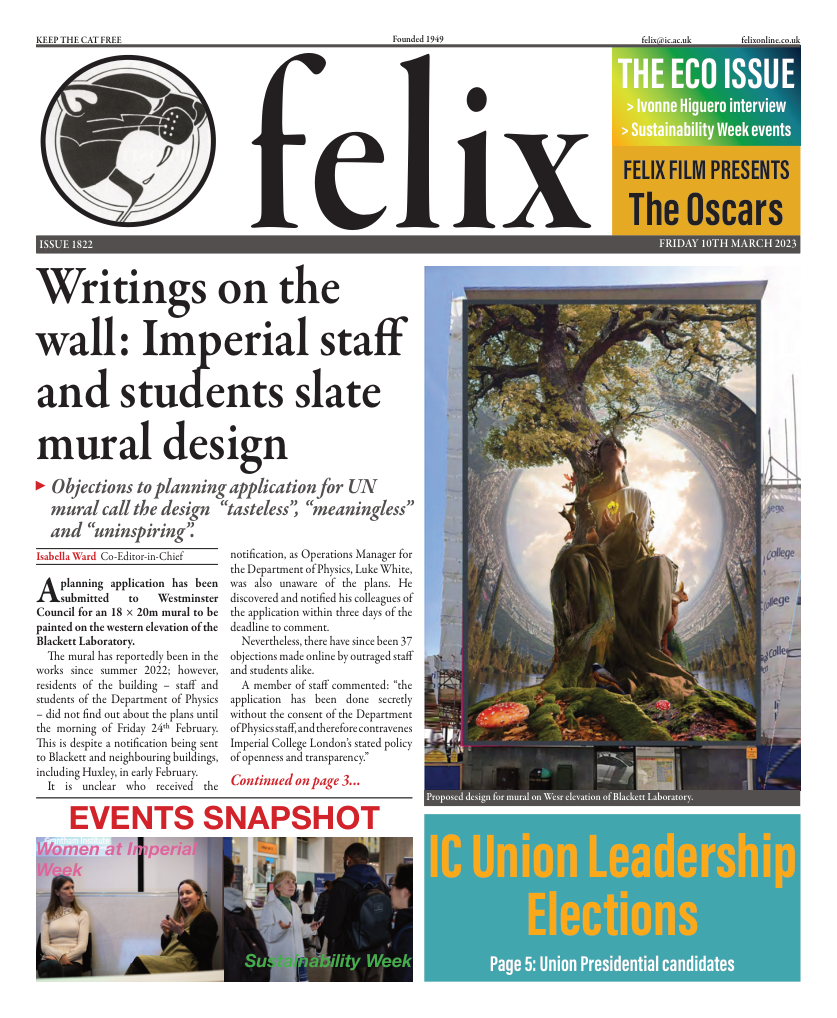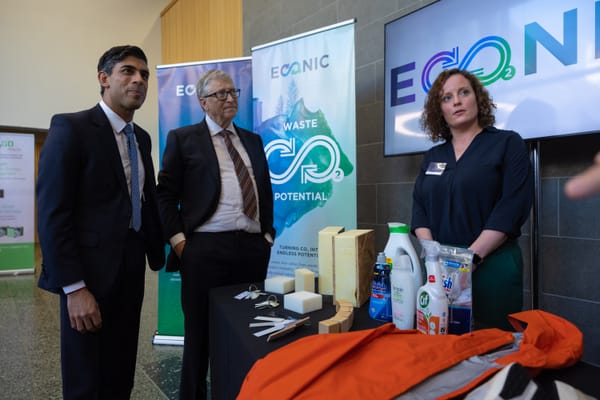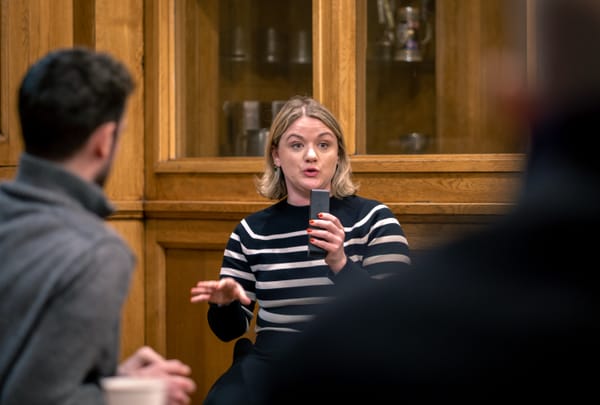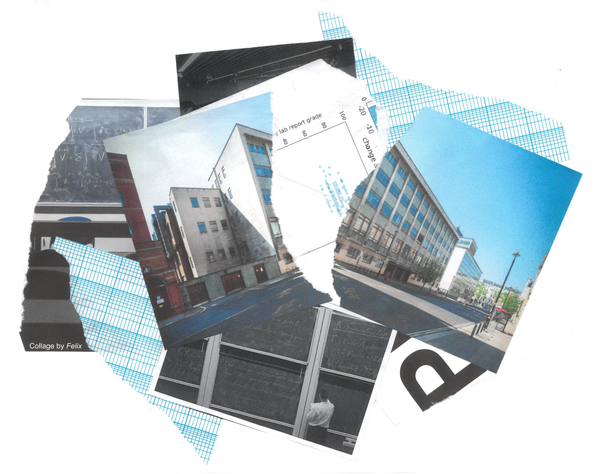Writings on the wall: Imperial staff and students slate mural design
Objections to planning application for UN mural call the design “tasteless”, “meaningless” and “uninspiring”
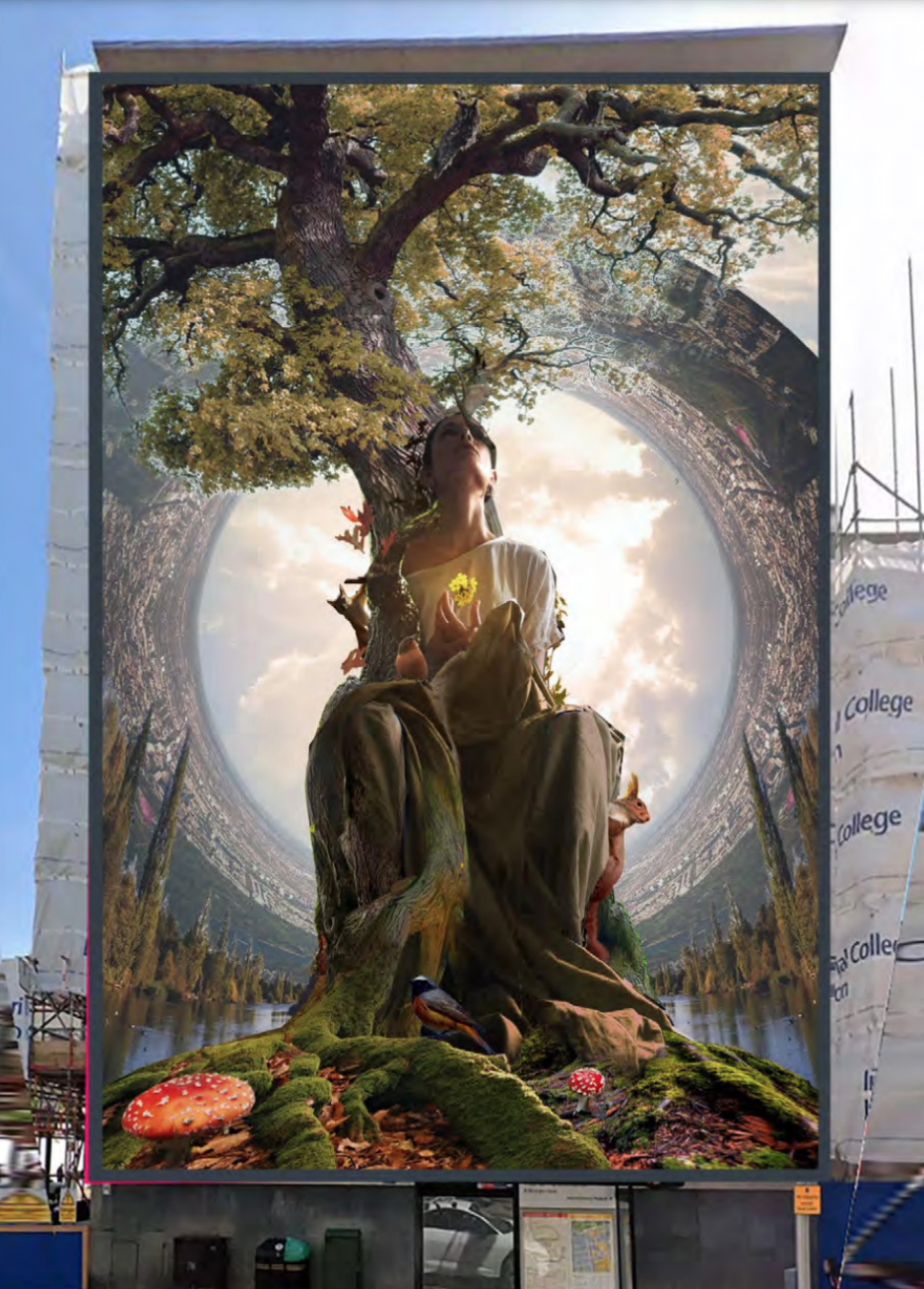
A planning application has been submitted to Westminster Council for an 18 × 20m mural to be painted on the western elevation of the Blackett Laboratory.
The mural has reportedly been in the works since summer 2022; however, residents of the building – staff and students of the Department of Physics – did not find out about the plans until the morning of Friday 24th February. This is despite a notification being sent to Blackett and neighbouring buildings, including Huxley, in early February.
It is unclear who received the notification, as Operations Manager for the Department of Physics, Luke White, was also unaware of the plans. He discovered and notified his colleagues of the application within three days of the deadline to comment.
Nevertheless, there have since been 37 objections made online by outraged staff and students alike.
A member of staff commented: “the application has been done secretly without the consent of the Department of Physics staff, and therefore contravenes Imperial College London’s stated policy of openness and transparency.”
Another called the lack of consultation “utterly unreasonable”, tweeting “It is emblematic of many of the management problems @imperialcollege that planning permission for a giant (ugly) mural on the @ImperialPhysics building has been sought without a single person who works in the building being consulted.”
The mural, set to be completed in April 2023, is part of UN Environmental Programme (UNEP) initiative ‘Ecosystem Restoration Murals’, which sees the UNEP and the Food and Agriculture Organistion of the United Nations (FAO) partner with anti-child trafficking charity Street Art for Mankind to create a global series of murals.
The planning application specifies a budget of £2 million. Felix understands that this is mostly funded by partners and sponsors of Street Art for Mankind.
Blackett Laboratory – one of three buildings in the UK to have been designated a historic site by the European Physical Society – would be the canvas for the London installation of this initiative. In the Planning Statement, Director of Estates Operations for the College Nick Roalfe explains “Given Imperial College’s strong commitment to sustainability, the opportunity to provide an elevation on one of the campus buildings to allow a mural supported by UNEP and promoting sustainability is an opportunity that the College wish to pursue.”
Staff and students alike have additional qualms about the subject and merit of the proposed artwork, which would emblazon the building in rainresistant weatherproof paint until at least 2028.
The design, by Italian artist Vesod, was justified by Imperial in the planning application: “The painting is dedicated to mother nature with the aim of calling the viewer to focus on the relationship between mankind and nature. Using images of London parks, the artist works on the circularity of the space to recall the natural cycle. The continuous renewal of nature blends with the elements of the city with the idea that they can renew themselves together.”
However, comments call the “void and uninspiring piece” “hollow”, “meaningless”, “garish”, “tasteless”, “derivative” and “tone-deaf ”. Furthermore, some feel the subject is not aligned with the diversity and inclusion Imperial intends to foster, as one member of staff argued “The outdated and somewhat sexualised representation of mother nature as a white woman is particularly inappropriate, not just from a diversity and inclusivity standpoint, but also because it reinforces a stereotype that confines women to purely mothering roles. For a university that purports to have a strong equality, diversity, and inclusion strategy, this appears to be a completely tone-deaf application and should not be approved.”
It is not just the Imperial community who have doubts; Knightsbridge Committee have commented “Whereas we are not opposed in principle to the proposed mural, our committee feels there is not enough detail re design and colouration in the documents, and have asked Imperial for further details before making a final comment.”
The application is pending. An Imperial College London spokesperson said: “We are pleased that Imperial has been approached by the UN Environmental Programme and renowned artist group Street Art for Mankind to be the location for one of their prestigious global Ecosystem Restoration Murals. The mural, currently designated for the Queens Gate wall of the Blackett building, aims to raise awareness and mobilise action to restore ecosystems and will be a powerful symbol of Imperial’s commitment to global sustainability efforts.”

